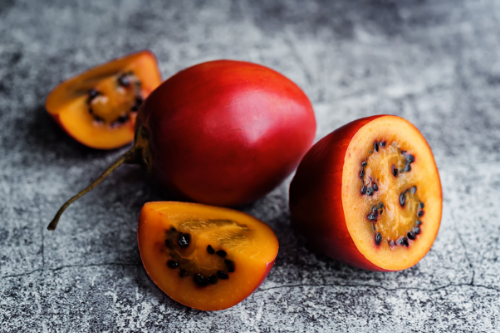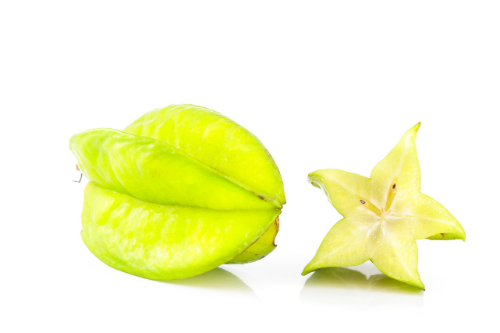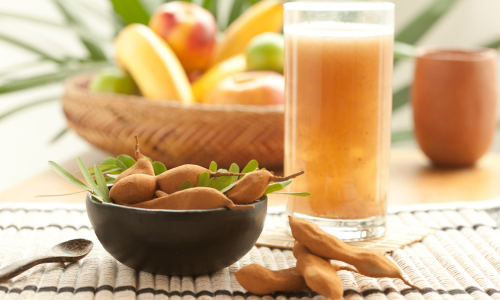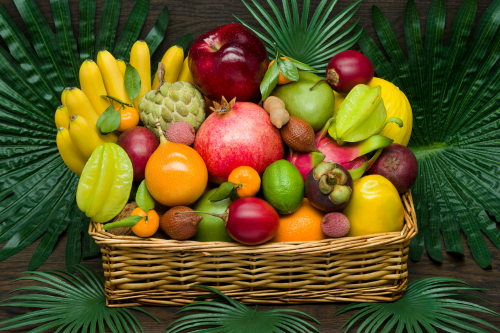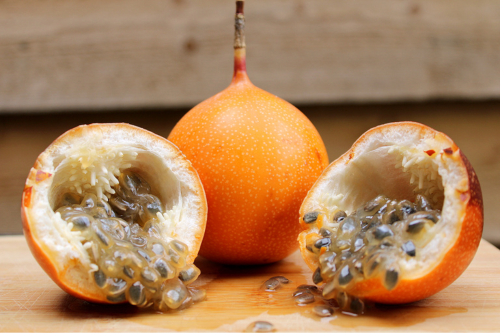Home » Tropical fruits » Tamarillo
Tamarillo
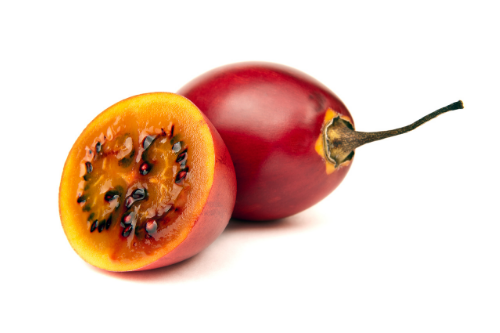
Rich in antioxidants
Boost immune system
Delicious ingredient in cutney

The tamarillo, also referred to as the tree tomato due to its shape, has a unique appearance that somewhat resembles a tomato.
Unlike its doppelganger, however, the tamarillo’s oval-shaped fruit comes in a range of bright colors, including red and yellow.
Upon slicing open the fruit, one will find a juicy, orange-yellow pulp with an intense sweet and sour flavor that is sure to please one’s taste buds.
Although edible, the skin of the tamarillo is often skipped due to its bitter taste.
Despite being a relatively unknown fruit, tamarillos have a wide range of uses in various dishes.
From marmalade to fruit salad, chutney or pies, the tamarillo’s versatile flavor can be incorporated into many different recipes.
Furthermore, tamarillos are a particularly healthy fruit, packed with an abundance of antioxidants, vitamins, and minerals.
In particular, potassium and magnesium are present in high concentrations.
Origin
The tamarillo is a tropical fruit that is native to South America, specifically the Andes mountain range.
The tree tomato, as it is also known, thrives in high-altitude regions, with the fruit growing best in areas between 3000 feet and 11000 feet above sea level.
The fruit grows on a fast-growing tree that typically blossoms within just a few weeks of planting.
Once the tree has bloomed, the process of producing ripe fruit takes an average of 16 weeks.
This period includes the growth phase of the fruit and the time it takes for it to mature to its full size and develop its characteristic taste.
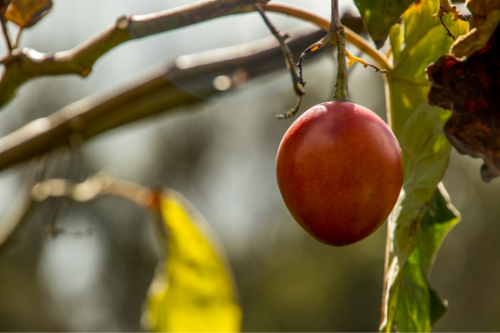
Taste
The tropical fruit tamarillo is known for its unique flavor that is both sweet and sour.
The pulp of the tamarillo is orange-yellow in color, juicy and contains small edible seeds that add a bit of texture to the fruit.
Some people compare the taste of tamarillo to a mixture of tomato and passion fruit, making it a great addition to a variety of dishes.
The skin of the tamarillo is also edible, although it is a bit more bitter than the pulp.
When it comes to preparing tamarillo, there are several ways to do it.
You can cut it in half and scoop out the flesh, or you can remove the skin and slice it.
Tamarillo can be eaten raw or cooked, and it can be used in a variety of healthy recipes, including salads, desserts, and sauces.
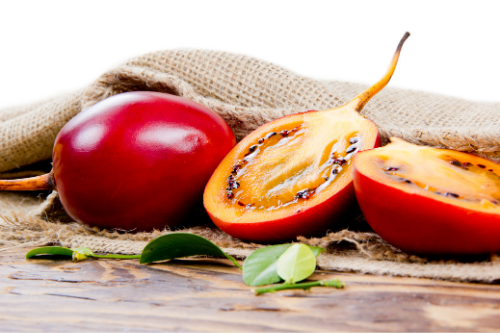
Store
Tamarillos are best stored in a cool place, about 12°C, outside of the refrigerator.
If you do not have a cool place for storage, tamarillos can also be stored in the refrigerator for up to a week.
Once the tamarillos are ripe, you can store them at room temperature, they become soft to the touch.
If you prefer a more tart flavor, you can try ripening them in a paper bag with an apple or banana.
This will speed up the process by trapping the ethylene gas that the tropical fruits produce, which is a natural ripening agent.
Benefits
Boost immune system
Helps with your heart
Strengthens the bones
Beneficial for your skin
Supports the health of eyes
Read the explanation of the health benefits here
